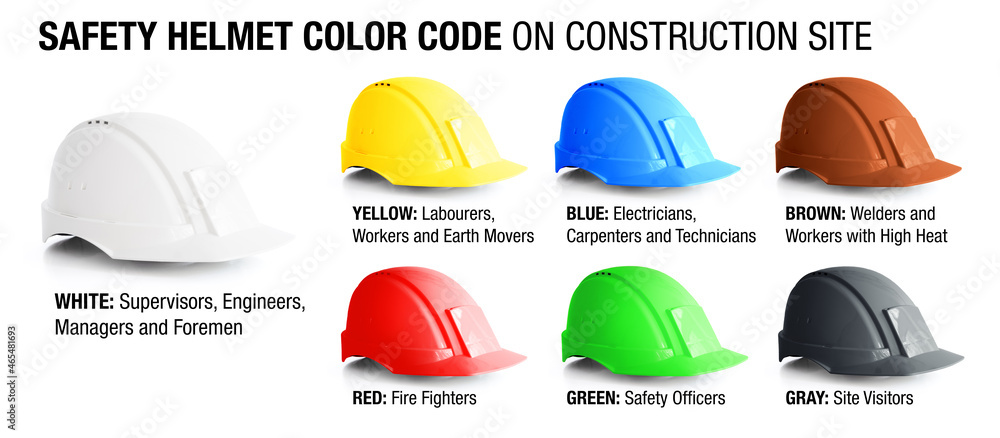The job of a construction worker is far from easy. It entails hard work and potential danger. That's why adhering to safety standards is paramount, and one crucial aspect is the use of safety helmet color codes for on-site safety. In this article, we will delve into the meaning behind the colors of safety helmets and provide insights on selecting the appropriate helmet color for different job roles.
Significance of Safety Helmet Color Codes
The primary purpose of safety helmet color codes is to ensure the safety and identification of workers on construction sites. These color codes assist supervisors in easily recognizing specific individuals and their respective roles. Let's explore the meaning associated with each safety helmet color:
-White Safety Helmets: Site managers, engineers, or supervisors wear white safety helmets.
-Yellow Safety Helmets: Construction workers and laborers don yellow safety helmets.
-Blue Safety Helmets: Carpenters and other technical workers don blue safety helmets.
-Orange Safety Helmets: Crane operators sport orange safety helmets.
-Green Safety Helmets: Safety inspectors are identifiable by their green safety helmets.
-Red Safety Helmets: Fire marshals wear red safety helmets.
-Grey Safety Helmets: Site visitors don grey safety helmets.
-Brown Safety Helmets: Welders and workers exposed to high heat applications opt for brown safety helmets.

If you hold a supervisory role, it is your responsibility to ensure that each worker wears the correct color-coded safety helmet that aligns with their job description. This practice avoids confusion throughout the workday and promotes effective communication and coordination.
The Purpose and Benefits of Safety Helmet Color Codes
Safety helmet color codes involve the application of colored tape on construction workers' helmets to aid in identification and safety. These colors serve various purposes, including:
-Worker Identification: Color codes help identify specific workers or work groups, facilitating better coordination on-site. They can also indicate the areas where a worker is authorized to access.
-Tool and Equipment Assignment: In some cases, the colors on safety helmets indicate which tools and equipment a worker should use in a particular area, promoting safety and efficiency.
-Injury Prevention: The use of safety helmet color codes helps prevent injuries and fatalities by providing clear visibility and clarity regarding job roles and work areas. This mitigates confusion and minimizes the risks inherent in the construction industry.
The origin of safety helmet color codes can be traced back to their use by construction companies during World War II. The U.S. military employed colored tapes to differentiate soldiers' roles within their units, ensuring smooth operations without interference or confusion.
The significance of safety helmet colors extends beyond being a safety precaution. They offer numerous practical benefits for workers, supervisors, and companies operating in the construction industry.
One of the most evident advantages is the high visibility of safety helmets on active construction sites. Supervisors can easily locate workers by spotting their brightly-colored helmets, leading to improved communication and more efficient task assignment.
The color code system also enables workers to find their supervisors quickly when they have questions or need assistance. During emergencies or incidents, supervisors can identify the relevant workers to provide immediate support, ensuring that no one is left behind due to miscommunication. Moreover, the vibrant colors aid workers in locating and seeking guidance from their colleagues when needed.
Apart from enhancing communication and safety, the color code system benefits the company itself. Construction companies can adopt different colors for various departments or shifts, allowing for easy identification of workers' roles as soon as they enter a work area. These colors can also reflect the experience, skill level, or seniority of the individuals wearing them, streamlining operations and fostering a sense of organizational structure.
In conclusion, safety helmet color codes play a pivotal role in construction site safety. By following these codes, construction sites can enhance communication, prevent accidents, and ensure efficient coordination among workers and supervisors. The visual clarity provided by safety helmet color codes not only promotes safety but also facilitates smooth operations and supports effective management within the construction industry.
Copyright © Hebei Sinotools Industrial Co.,Ltd. All Rights Reserved | Powered by  Sitemap
Sitemap